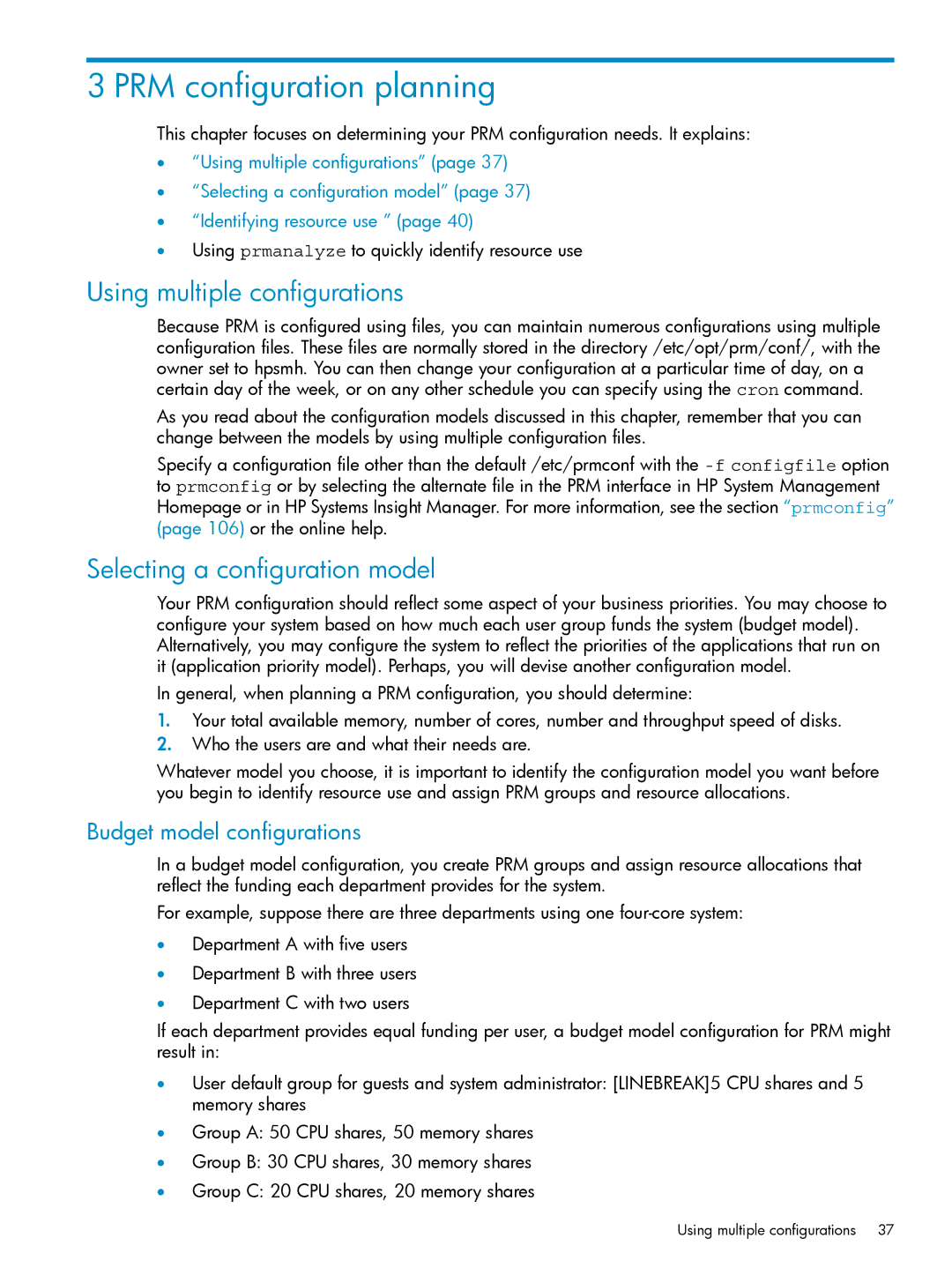3 PRM configuration planning
This chapter focuses on determining your PRM configuration needs. It explains:
•“Using multiple configurations” (page 37)
•“Selecting a configuration model” (page 37)
•“Identifying resource use ” (page 40)
•Using prmanalyze to quickly identify resource use
Using multiple configurations
Because PRM is configured using files, you can maintain numerous configurations using multiple configuration files. These files are normally stored in the directory /etc/opt/prm/conf/, with the owner set to hpsmh. You can then change your configuration at a particular time of day, on a certain day of the week, or on any other schedule you can specify using the cron command.
As you read about the configuration models discussed in this chapter, remember that you can change between the models by using multiple configuration files.
Specify a configuration file other than the default /etc/prmconf with the
Selecting a configuration model
Your PRM configuration should reflect some aspect of your business priorities. You may choose to configure your system based on how much each user group funds the system (budget model). Alternatively, you may configure the system to reflect the priorities of the applications that run on it (application priority model). Perhaps, you will devise another configuration model.
In general, when planning a PRM configuration, you should determine:
1.Your total available memory, number of cores, number and throughput speed of disks.
2.Who the users are and what their needs are.
Whatever model you choose, it is important to identify the configuration model you want before you begin to identify resource use and assign PRM groups and resource allocations.
Budget model configurations
In a budget model configuration, you create PRM groups and assign resource allocations that reflect the funding each department provides for the system.
For example, suppose there are three departments using one
•Department A with five users
•Department B with three users
•Department C with two users
If each department provides equal funding per user, a budget model configuration for PRM might result in:
•User default group for guests and system administrator: [LINEBREAK]5 CPU shares and 5 memory shares
•Group A: 50 CPU shares, 50 memory shares
•Group B: 30 CPU shares, 30 memory shares
•Group C: 20 CPU shares, 20 memory shares
Using multiple configurations | 37 |
